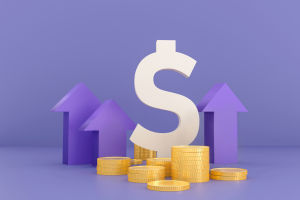Foreign exchange trading has evolved far beyond manual charts and gut instincts.
Today, artificial intelligence (AI) is stepping into the arena, not as a futuristic fantasy but as an increasingly influential force in currency speculation.
The global forex market, known for its speed and volatility, offers an ideal environment for AI's real-time data processing and pattern recognition capabilities. While AI has transformed numerous sectors, its impact on forex trading is still under rigorous examination. Is it a genuine breakthrough or just another overhyped buzzword?
Mechanics: What AI Does in Forex
AI in forex is not about replacing traders. It is about augmenting decision-making. At its core, AI systems in this space process massive volumes of historical and real-time market data. These systems identify subtle patterns, execute trades within milliseconds, and adapt to shifting conditions in a way human cognition simply cannot.
Unlike rule-based algorithms of the past, modern AI tools incorporate machine learning. This means they refine their performance over time by learning from new data. Dr. Alice Robertson, economist and quantitative strategist, stated, "AI's true power lies in capturing complex, non-linear relationships across global currency markets," according to a research report from the Centre for Financial Innovation.
Not Just Numbers: Interpreting Human Behavior
What sets AI apart is not merely its mathematical precision. It is the ability to integrate behavioral data. Sentiment analysis, which processes the tone of news articles, financial reports, and even social media chatter, allows AI tools to infer market psychology. When thousands of traders simultaneously express fear or optimism, the algorithm does not just notice. It adapts.
This psychological dimension is often underappreciated. In the forex market, perception moves faster than fundamentals. An unexpected headline about global volatility can trigger a currency spike or crash in seconds. AI's edge lies in detecting emotional shifts before they fully reflect in prices.
The Myth of "Set-and-Forget" Intelligence
Despite its sophistication, AI is not an omniscient oracle. One of the most dangerous misconceptions in forex trading today is the belief that AI can generate guaranteed profits without human oversight. This illusion is not only misleading but financially reckless. Machine learning systems depend on the quality of the data they ingest. If data is biased, incomplete, or misinterpreted, outcomes can be flawed.
Even the most advanced AI models suffer performance degradation during market regime shifts such as post-crisis rebounds or extreme shocks.
Regulatory and Ethical Considerations
As AI-driven forex trading grows, so does regulatory scrutiny. Financial authorities are increasingly concerned about transparency and accountability. Unlike human traders, AI does not explain its reasoning. Moreover, there is the issue of market distortion. High-frequency trading powered by AI can lead to flash crashes where currencies experience sharp drops within seconds before stabilizing. The debate now centers not on whether AI should trade currencies but how it should be monitored.
Balancing Human Judgment and AI Efficiency
The most successful forex strategies today often emerge from a hybrid approach. Human intuition, contextual reasoning, and ethical awareness are combined with the computational power and pattern detection abilities of AI. This synergy allows for smarter risk management, adaptive strategies, and ultimately more consistent performance.
AI enhances decision-making but does not replace it. In forex, understanding the reason behind price movements is still crucial and that is where human traders come in.
AI is not the magic that will make every forex trader a millionaire. Nor is it a passing fad. It is a powerful tool that must be wielded with understanding, caution, and discipline. Those who thrive in tomorrow's currency markets will not be the ones who blindly follow machines. They will be the ones who know when to trust data and when to question it. In this ongoing evolution, AI is not the destination. It is a multiplier for those who stay informed, adaptive, and grounded in financial reality.


